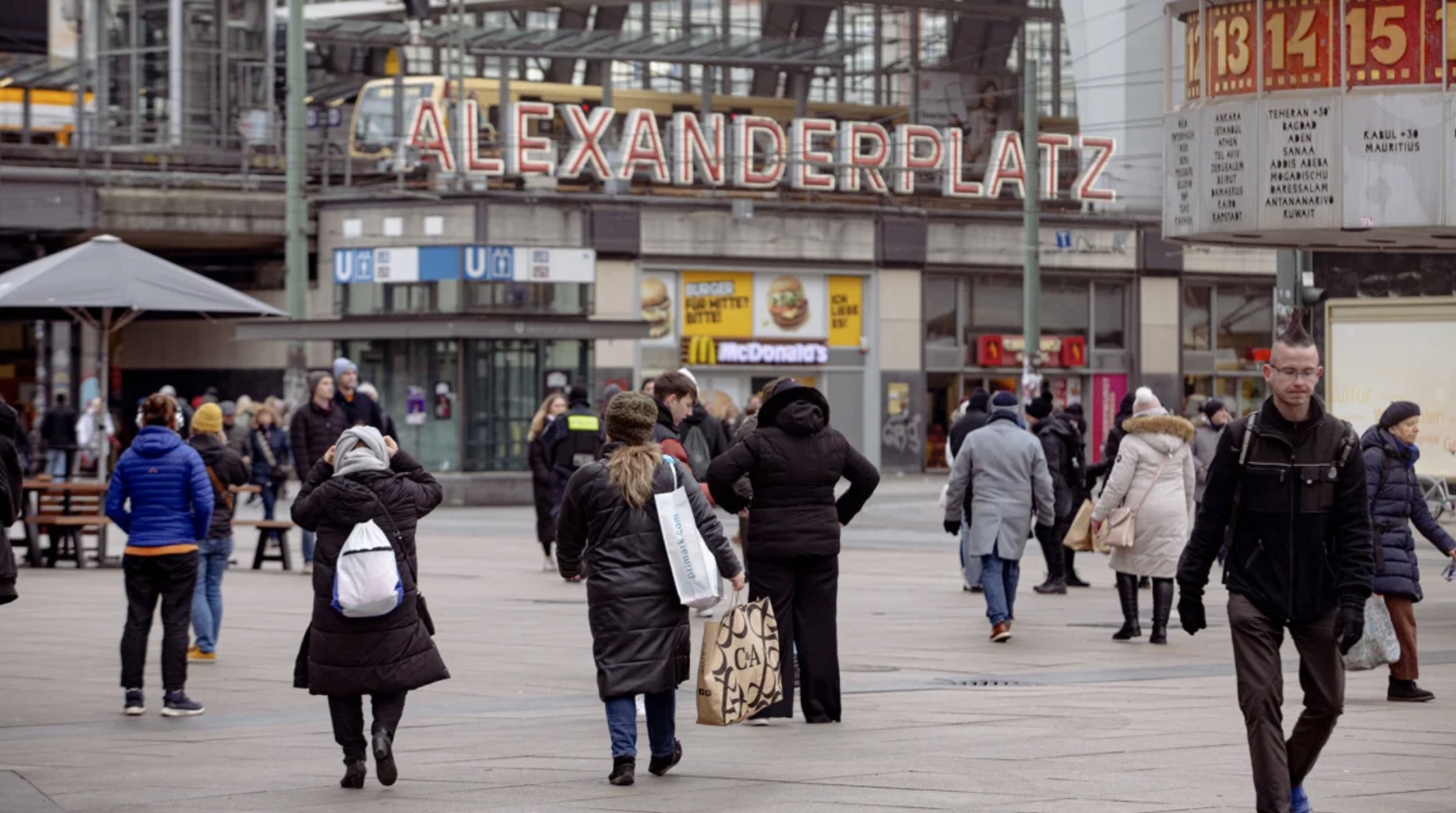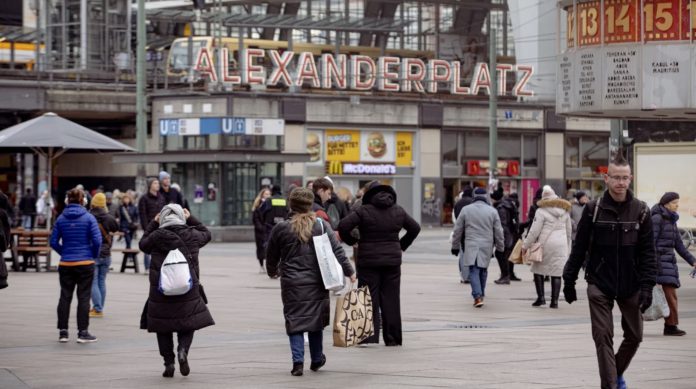ลอนดอน
เศรษฐกิจของเยอรมนี ซึ่งเป็นเศรษฐกิจที่ใหญ่ที่สุดในยุโรป หดตัวลงเป็นปีที่สองติดต่อกันในปี 2024 ตามข้อมูลทางการที่เผยแพร่เมื่อวันที่ 15 มกราคม ซึ่งเน้นให้เห็นถึงความท้าทายที่ภูมิภาคกำลังเผชิญในขณะที่พยายามที่จะฟื้นฟูการเติบโตทางเศรษฐกิจให้กลับมาดำเนินต่อไป
ผลิตภัณฑ์มวลรวมภายในประเทศ (GDP) ของเยอรมนีหดตัวลง 0.2% เมื่อปีที่แล้ว ตามข้อมูลจากสำนักงานสถิติแห่งชาติของเยอรมนี หลังจากหดตัวลง 0.3% ในปี 2023
นี่เป็นครั้งแรกตั้งแต่ต้นทศวรรษ 2000 ที่เศรษฐกิจของเยอรมนีหดตัวสองปีติดต่อกัน ซึ่งในขณะนั้นเยอรมนีกำลังเผชิญกับปัญหาการว่างงานสูง ตามคำกล่าวของคาร์สเทน บรเซสกี หัวหน้าฝ่ายเศรษฐศาสตร์มหภาคระดับโลกจากธนาคาร ING
ข้อมูลดังกล่าวออกมาเพียงไม่กี่สัปดาห์ก่อนการเลือกตั้งฉุกเฉินที่สำคัญ ซึ่งถูกเรียกขึ้นหลังจากที่รัฐบาลผสมของเยอรมนีล่มสลายในปลายปีที่แล้วเนื่องจากความขัดแย้งเกี่ยวกับวิธีการเสริมสร้างเศรษฐกิจที่อ่อนแอของประเทศ
“ความหวังคือรัฐบาลเยอรมันใหม่จะตัดสินใจวางแผนระยะยาวในการปฏิรูปเศรษฐกิจและการลงทุน” บรเซสกีเขียนในบันทึก
ปัญหาที่เศรษฐกิจเยอรมนีกำลังเผชิญสามารถเห็นได้จากวิกฤตที่เกิดขึ้นกับผู้ผลิตใหญ่ที่สุดของประเทศอย่างโฟล์คสวาเกน ในเดือนธันวาคม ผู้ผลิตรถยนต์รายนี้ประกาศการเปลี่ยนแปลงครั้งใหญ่ในกระบวนการดำเนินงานในประเทศบ้านเกิด รวมถึงการตัดงานมากกว่า 35,000 ตำแหน่งและแผนการย้ายการผลิตบางส่วนไปที่เม็กซิโก
เหมือนกับโฟล์คสวาเกน เยอรมนีกำลังเผชิญกับต้นทุนแรงงานที่สูง การเติบโตของผลผลิตที่อ่อนแอ และการแข่งขันจากจีน นอกจากนี้ยังไม่สามารถพึ่งพาความต้องการที่สูงสำหรับการส่งออกในเศรษฐกิจที่ใหญ่เป็นอันดับสองของโลก ซึ่งขณะนี้ผลิตสินค้าที่เคยนำเข้าจากยุโรปในประเทศของตนเองมากขึ้น
ตามคำกล่าวของบรเซสกี การผลิตอุตสาหกรรมของเยอรมนียังคงต่ำกว่าระดับก่อนการแพร่ระบาดของโรคโควิด-19 ประมาณ 10% การเก็บภาษีที่สูงขึ้นจากการเข้ามาของการบริหารใหม่ในสหรัฐอเมริกาอาจทำให้สถานการณ์แย่ลง เพราะอาจส่งผลกระทบต่อการส่งออกของเยอรมนีและ “ผลกระทบที่มีต่อการลงทุนของเยอรมนีหากบริษัทต่างๆ ย้ายการผลิตไปยังสหรัฐอเมริกา” เขากล่าว
ธนาคารกลางของเยอรมนีกล่าวเมื่อเดือนที่แล้วว่า การชะลอตัวทางเศรษฐกิจจะยังคงดำเนินต่อไปในปีนี้ โดย GDP “จะเริ่มฟื้นตัวอย่างช้าๆ ตลอดปี 2025”
ข้อมูล GDP นี้เป็นสัญญาณที่ไม่ดีสำหรับเศรษฐกิจยุโรปโดยรวม ซึ่งพยายามเติบโตอย่างมีนัยสำคัญหลังการแพร่ระบาดของโรคโควิด-19 และอาจต้องเผชิญกับความสัมพันธ์ที่ตึงเครียดกับหนึ่งในคู่ค้าที่สำคัญที่สุดของมันอย่างสหรัฐอเมริกา
ข้อมูลจากสำนักงานสถิติของสหภาพยุโรปเมื่อวันพุธแสดงให้เห็นว่า การผลิตอุตสาหกรรมใน 20 ประเทศที่ใช้เงินสกุลยูโรเพิ่มขึ้นเล็กน้อยในเดือนพฤศจิกายน เมื่อเทียบกับเดือนตุลาคม แต่ยังคงต่ำกว่าระดับเมื่อเจ็ดปีก่อนถึง 9% ซึ่งส่วนหนึ่งเป็นผลจากราคาพลังงานที่ยังคงสูงจากการรุกรานยูเครนของรัสเซีย ตามข้อมูลจาก Capital Economics
“การสำรวจแสดงให้เห็นว่าการผลิตจะยังคงอยู่ในภาวะซบเซาต่อไปในช่วงเดือนข้างหน้า” นักเศรษฐศาสตร์จาก Capital Economics ในยุโรป อาเดรียน เพรตเทจอห์น เขียนในบันทึก “ยิ่งไปกว่านั้น พายุทางโครงสร้างที่เยอรมนีกำลังเผชิญในภาคอุตสาหกรรมยานยนต์จะส่งผลกระทบต่อการผลิตอุตสาหกรรมในเขตยูโรโซนต่อไปอีกระยะหนึ่ง”
German economy, Europe’s largest, shrinks for second straight year

London
CNN —
Germany’s economy, the largest in Europe, contracted for the second year in a row in 2024, official data showed Wednesday, underscoring the challenges facing the region as it tries to get economic growth back on track.
Germany’s gross domestic product fell 0.2% last year, according to the country’s Federal Statistical Office, following a contraction of 0.3% in 2023.
It’s the first time since the early 2000s, when Germany was grappling with high unemployment, that the economy has shrunk for two years in a row, according to Carsten Brzeski, global head of macroeconomics at pan-European bank ING.
The data comes just weeks ahead of a crucial snap election, called after Germany’s governing coalition collapsed late last year over disagreements about how to bolster the country’s weak economy.
“Hope is that any new German government would decide on a longer-term plan for economic reforms and investments,” Brzeski wrote in a note.
The troubles facing the German economy are captured by the crisis at the country’s largest manufacturer, Volkswagen. In December, the automaker announced sweeping changes to operations in its home country, including more than 35,000 job cuts and plans to shift some production to Mexico.
Like Volkswagen, Germany faces high labor costs, weak productivity growth and competition from China. It can also no longer rely on red-hot demand for its exports in the world’s second-largest economy, which is increasingly producing locally many of the goods that it used to import from Europe.
According to Brzeski, German industrial production remains about 10% below its pre-pandemic levels. Possible higher tariffs from the incoming US administration could make the situation worse because of the potential impact on German exports and “the effect on German investments if companies were to move production to the US,” he said.
Germany’s central bank said last month that economic stagnation was set to continue this year, with GDP “only beginning to make a slow recovery over the course of 2025.”
The GDP data bodes ill for the wider European economy, which has struggled to grow significantly after the pandemic and will also potentially face a more fractious relationship with one of its biggest trading partners, the United States.
Data from the European Union’s statistics office Wednesday showed that industrial production in the 20 countries that use the euro increased slightly in November compared with October. Still, it remains 9% below its level seven years ago, partly as a result of energy prices kept high by Russia’s full-scale invasion of Ukraine, according to Capital Economics.
“Surveys suggest that production will remain subdued over the coming months,” the consultancy’s Europe economist Adrian Prettejohn wrote in a note. “Moreover, the structural headwinds facing Germany’s auto sector will weigh on eurozone industrial production for some time yet.”
By Hanna Ziady, CNN

















